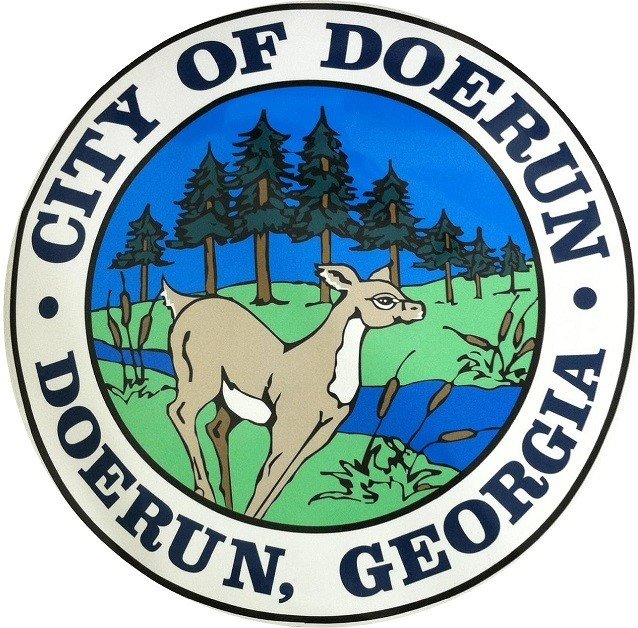EDDIE SEAGLE: Water is a landscape’s lifeblood
Published 11:27 am Sunday, February 21, 2021

- Eddie Seagle is a Sustainability Verifier, Golf Environment Organization (Scotland), Agronomist and Horticulturalist, CSI: Seagle (Consulting Services International) LLC, Professor Emeritus and Honorary Alumnus (Abraham Baldwin Agricultural College), Distinguished Professor for Teaching and Learning (University System of Georgia) and Short Term Missionary (Heritage Church, Moultrie). Direct inquiries to csi_seagle@yahoo.com.
“It is life, I think, to watch the water. A man can learn so many things.” Nicholas Sparks. “When life places stones in your path, be the water. A persistent drop of water will wear away even the hardest stone.” Autumn Morning Star. “Human nature is like water. It takes the shape of its container.” Wallace Stevens. “Water is the most critical resource issue of our lifetime and our children’s lifetime. The health of our waters is the principal measure of how we live on the land.” Luna Leopold.
Thus far, February has been a month filled with cold and warm temps, wind and lots of rain. Even though March is on the horizon, Easter is April 4 so expect some cool weather yet to come. Each year, our actual rainfall varies from week to week and month to month – sometimes wet, sometimes dry, sometimes just right. February has been wet but it is still a good time to discuss water management.
Water is a priceless resource and the supply lessens day by day. In order to preserve water for our future generations and practice good water stewardship, we must sustain and conserve. The earth’s supply of water is finite! What we have now is the most that there will ever be, but our global population and developments continue to grow placing much concern on available water resources, now and in the future.
For many generations, the distribution of our water resources dictated where people would live, manufacturing would happen, and pleasurable recreation would occur. Because of our reckless use of this precious resource, we are now faced with issues on conservation, sustainability and restrictions like no other generation before us.
As long as we have homes, parks and facilities, we will landscape and grass them. Let us plan ahead and proceed in a manner conducive to more effective conservation and sustainability efforts. Any effort to reduce the demand for this precious resource must be labeled as beneficial and realistic. One such strategy is called xeriscaping or water-wise landscaping which can be very effective and help to conserve our water situations.
For many years we have applied more and more horticultural and agronomic concepts to our landscapes and allowed the ecological aspects to take a back seat. This resulted in the use of many exotic plants that required high maintenance and much water. Now, it is certainly of the essence that we pay more attention to native plants and sustainability practices.
Our landscapes receive water from two primary sources, naturally from rainfall and supplementary from irrigation. Understanding that water is a landscape’s lifeblood, it is important to ensure water stays where it belongs thus minimizing runoff and off-target applications. There are many water-smart practices to assist with proper water stewardship.
Xeriscaping, with emphasis on the use of native and sustainable plants, offers our country the opportunity to restore the regional distinctiveness throughout that has been de-emphasized in modern society. By combining plants with similar watering needs, matching them with local climates, and integrating them with construction materials and native design themes, landscape designers will have the opportunity to begin a new era in restoration of our diverse national and local landscapes.
The National Xeriscape Council developed principles that have come to serve as a guide in the development and maintenance of landscapes which will assist everyone in using water wisely (conserving) and not wastefully (reckless abandonment). Such principles include proper planning and design, developing watering zones called hydro-zones from areas of low water usage to higher usage areas, conducting proper soil analysis to determine what is needed to promote deep rooting and improved plant health.
Also, selecting appropriate plants through suitability and adaptability to the site, defining practical turf areas limited in size to minimize energy usage and improve curb appeal, concentrating on effective irrigation systems that provide uniformity (coverage) and efficiency (minimal waste and loss), and selecting mulches that complement the health of the plant and curb appeal.
And, choosing the appropriate maintenance practices that support water conservation. Such practices include blowing or sweeping sidewalks rather than hosing them which will save water, using anti-transpirants on plants help conserve moisture, regular mowing will limit the height of the turf and increase density which will conserve moisture, keeping your plants pest-free and healthy, and selecting pest-tolerant plants (insect and disease tolerance) which will support healthier plants.
To reduce runoff from heavy rains, develop rain gardens (primarily native plants) to help absorb the water, use cisterns to harvest rains from roofs to supplement irrigation systems, and use mulch in bed areas to conserve moisture and help the absorption of rain water. Also, lawn aeration helps to increase infiltration, porous paving systems in parking lots, drives and walkways help with infiltration and minimizing runoff, and green roof gardens absorb rainwater and reduce runoff. And add drip irrigation systems to conserve moisture, replace irrigation clocks with smart controllers to efficiently reduce water use, and audit your landscape and irrigation system biennially to identify zones that need less water as plants mature.
As you plan your landscapes this season, always keep xeriscaping principles in mind. You will enjoy the benefits of your labor throughout the seasons to come through curb appeal, controlled water usage, improved conservation, and effective sustainability. Always think sustainability and native plants!
Remember to feed and water the songbirds, and give your pets the care they need. Be on the lookout for children playing and bicyclists riding along the streets and roadways throughout our communities. Pay attention to school buses and respect their stop signs and other signals as they transport our children to and from school and home. And remember to safely share the road with motorcycles and other vehicles. Drive alert and arrive alive. Don’t drive distracted or impaired, don’t text while driving, and “click-it” or ticket. Let’s keep everyone safe! Help the homeless every chance you get. As you receive blessings, always pay them forward and share with others.
“There is no fear in love. But perfect love drives out fear, because fear has to do with punishment. The one who fears is not made perfect in love. We love because he first loved us.” 1 John 4:18-19. “Let us not become weary in doing good, for at the proper time we will reap a harvest if we do not give up.” Galatians 6:9. “The arrogance of man will be brought low and the pride of men humbled; the LORD alone will be exalted in that day, and the idols will totally disappear.” Isaiah 2:17-18. “As the body without the spirit is dead, so faith without deeds is dead.” James 2:26.
Eddie Seagle is a Sustainability Verifier, Golf Environment Organization (Scotland), Agronomist and Horticulturalist, CSI: Seagle (Consulting Services International) LLC, Professor Emeritus and Honorary Alumnus (Abraham Baldwin Agricultural College), Distinguished Professor for Teaching and Learning (University System of Georgia) and Short Term Missionary (Heritage Church, Moultrie). Direct inquiries to csi_seagle@yahoo.com.





